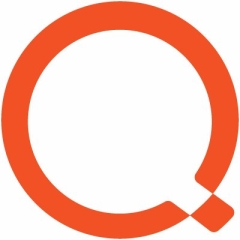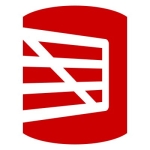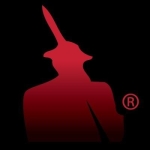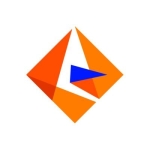What is our primary use case?
We use it as a monitoring tool, which is what it's designed for. And we generally only scratch the surface of it. We use it for checking blocking and locking deadlocks, server activity, database activity, running baselines, et cetera. We don't constantly look at it; we only look at it if we've noticed a problem. It could be something that might be brought to our attention where a particular database might not be running as fast as it should. The first thing we jump into is fog Foglight to see if anything jumps out at us.
We have it running locally inside our server room and have three instances of it. Two of them are current, one of them is going to get updated next week.
How has it helped my organization?
One of the benefits we see from it is the fact that it already has an answer for us without us really having to ask around. I jump right to that baseline chart and I can show everybody that, between this time and that time, the databases were running as they should be. That way, we know we have to look at something outside of the database as being the issue.
Foglight definitely saves us time when it comes to root cause analysis. We have one senior DBA who will also run some code within SQL Server to double-check a few things, but for the most part he will jump right into Foglight and use that to try to pinpoint where the problem is. He will then take any code he finds in there and throw it into SQL Server to decipher things there.
What is most valuable?
One of the features that we find most valuable is the logging that it does, because it's very lightweight logging, and that is something we were looking for. We were looking for a software package that won't impact our servers while it monitors them. We capture the SQL statements that are going through the database, the users that are hitting it, and potentially any issues that might be coming up with those users using a particular line of code. It does capture the code that it's running and we might be able to take that and say, "Okay, this code is not efficient enough." We might need to rewrite it before we can put it back into production.
The real-time activity screens are also helpful. The first thing I look at is the baseline. That is my automatic go-to. If somebody is complaining that a database is running slowly, I'll present them with a screenshot of the chart showing that the database is running what I call "baseline normal," meaning it's within our minimum/maximum range of how the database should be running at that point in time during the day. That way, if there is something that is running slowly, we can eliminate the database as being an issue and perhaps look at the server, network activity, or something outside of the realm of the database as being the issue. One of the other DBAs who uses the software generally looks at the locking and deadlocks and at any code that jumps out at him that might not be running as efficiently as it should.
What needs improvement?
The reporting is very confusing. It's not very intuitive. I've used it on occasion, but I've really struggled with getting the reporting to work correctly for me. It's too cumbersome and too busy. I don't like using this expression, but they should dumb it down a little bit because it can be very confusing without proper training.
I've also had a lot of people ask me about customizing some dashboards and I've worked on that on occasion, but again, that's more confusing than it is helpful, although I do have a couple I use myself. I had planned on having some classroom training on this aspect, before all the COVID stuff started. We'll probably end up doing that but, of course, we will have to do it via video conference. But customizing the dashboards is something that could be simplified a little bit.
The alarms could also be a little bit less confusing. You would expect maybe two or three options in a dropdown but there are about 20 options. They give you a lot of information that is not pertinent to what I'm looking for.
If they can improve the reporting, custom dashboards, and the interface, this product would be an absolute solid 10.
For how long have I used the solution?
We have been using Quest Foglight for Databases since November of 2016.
What do I think about the stability of the solution?
It's up about 99 percent of the time.
Generally, if it ever goes down, it's because of something that has happened on our side and nothing that Foglight created or caused. I'm very proud to say that if it goes down, it is rarely due to Foglight.
About two or three years ago, we did have an issue where the Foglight service was stopping by itself. I got a hold of tech support and they determined what the problem was. It was a setting somewhere and they were able to rectify that by making some changes to it. We haven't had that issue since.
What do I think about the scalability of the solution?
If we were to venture outside of SQL Server and go to Oracle or any of the other products that Foglight supports, we would probably buy the cartridges that would interface with Foglight to run those as well. It's very scalable. We're very glad that we've already got our foot in the door with Quest and with Foglight, because we're familiar with it. We don't want to have to start over with somebody else.
It's used by our whole database team—that's 10 of us—but generally only three or four of us look at it. The main interface is good, but once you start drilling down, it can be very intimidating. We have about 300 developers, managers, and directors who all have access to it. Out of them, only about 25 percent of them use it. It can be a rather intimidating interface. It's not as user-friendly as it could be.
How are customer service and support?
If I run into a question, I can email my liaison and she can usually get an answer to me within a couple of hours and, if not, by the end of the day. One of the things that stands out with their Premier Support is their speed, how fast they will get back to me on things.
I can't say enough good things about their tech support. They are always on top of things and that's why, every year when it comes up to renew it, it has never been a question. As soon as I have an issue, I put in a ticket number and, within 30 to 45 minutes if not less, I have a reply. And that is even for a low-priority issue.
They stay on top of everything. They are really good about making sure things are fixed. And even if something carries over to the next day or the next week, because I haven't had time to get it to it, they will email me every couple of days and ask, "How's everything going? Is the problem still there? Is there anything we can do to help?" They stay on top of absolutely everything.
The Premier Support has definitely been an influence in purchasing licenses from Quest. We have 147 licenses for Foglight and at this point we're only using about 112. But every year, when it comes time to renew those, the question is never, "Should we reduce the cost of our licenses?" because we will add more servers to this. The Premier Support drives that fact. We did have an issue where one of the servers was down and it wasn't because of Foglight. The server was just down. My directors said, "We need to get this thing back up. We need Foglight to help us determine what other problems are going on." I mentioned it to my liaison at Quest and she said, "I've got somebody ready to help you. If you need any help at all, they'll be happy to remote in and give you a hand."
Which solution did I use previously and why did I switch?
We were an IDERA SQL Diagnostic Manager company for a number of years and everybody loved it because the interface was not scary, it wasn't intimidating. But the problem with IDERA was that they didn't have a web solution at the time. That's why we looked at Foglight. It already had a web solution and that's what we wanted.
When we decided to go with Foglight, a lot of people stopped using the diagnostics part because it was very intimidating. Even though I offered training and I created a lot of documents—because when we started with it in 2016, that kind of documentation didn't exist—a lot of the people came into Foglight "kicking and screaming." They still won't use it because they feel it's too intimidating. They will open something up and not know what to do. It's not very user-friendly. You have to click on a lot of stuff to find the information. I'm used to it and a number of our end-users are used to it. They know where to go for the information. But some of the people who used the Diagnostic Manager from IDERA still refuse to use Foglight to this day, because it's very intimidating.
How was the initial setup?
The very first time I set it up as a demo, I had it set up in less than an hour. I was really impressed. I thought for sure it was going to be a task, but I was able to set it up within an hour for a test scenario, and that was key for us. When we actually purchased it, we had one of my server engineers set it up and I asked him how hard it was. He said, "I had one of the instances set up in about 45 minutes." For him it was also very easy.
Our implementation strategy, when we set this up initially in 2016, was to break it into three groups. We had an instance of Foglight for our production servers, we had an instance of Foglight for our development servers, and we had an instance of Foglight for our servers over in Leeds, in the United Kingdom. That way, we could use the federated Foglight to look at all of them, but we could also just look at the production stuff or the development setup, et cetera.
What was our ROI?
I wish I could give you a number, but it definitely does save us time. The logging it has saves us time because we can use the timeline and go back. We've had people say, "What happened 17 hours ago at this time?" We can use Foglight to go back and see what happened. It could have been that at nine o'clock the previous night there had been an issue they weren't aware of. We can use Foglight to go back and check that out. SQL Server doesn't keep those kinds of logs. Fortunately Foglight does. It has saved us more time than I can count.
What's my experience with pricing, setup cost, and licensing?
The pricing has never been a question. We just renewed in November, for the fifth year in a row. It's never a question of whether we need to renew this or the Premiere Support.
Which other solutions did I evaluate?
When we first started looking at Foglight, we wanted to go to a web-based operation, so our end-users wouldn't have to install a program on their computers. We wanted a setup where all they had to do was log in to something. I found Foglight through a Google search, of course, and thought I would give it a try. As I said, within an hour, I had things set up and running, whereas with the IDERA Web Solution I was having all kinds of problems. IDERA's web solution was just coming out at that time, in 2016. We haven't looked back ever since. We have never questioned, "Should we go to another solution?"
We do wish the Foglight interface was less confusing, but with a few of us who know how to look at it, read it, and interpret the data, it's a good solution. We just wish more end-users would take advantage of it.
What other advice do I have?
Don't be afraid of the interface, because you can't break anything. Click on absolutely anything and everything you can find. That's how I learned it. I took a good two or three weeks, once we did implement this. Anytime I could click on something, I was clicking on it just to see where it was going to take me. I would jot some notes down to tell me, "This took me here, that took me there." Don't be afraid to click on something.
If my mouse will click on it, then I'll click on it. If anything, it's going to give me some information that I might not have had before. And if it leads me down a dead end road, I just back out of it. In that situation it may be because it's information that is either over my head, or it's information that's not needed. But I'm not afraid to click on anything because Foglight is there to help me. It's like tapping somebody on the shoulder and saying, "Hey, what's going on in here?"
When you purchase it you will get a liaison. I would recommend touching base with them as often as you can. The forums for Quest have also come a long way since 2016. Back then, they were barely existent, but they've come a long way. Use the forums. Don't be afraid to ask questions. There's no such thing as a stupid question because if you're asking, then you know somebody else has asked it.
Sometimes we'll use Foglight to drill down and see what's causing an issue. If things are baseline normal for us and we've already eliminated the database as being an issue, then we have to look at the server team, the network team, and even web support to see if they are alright. We really don't use it to track server activity other than CPU usage, memory usage, and the like. When we drill down, even though we've eliminated the database as the source of the issue, we use Foglight because sometimes it will show that we're getting some CXPACKET issues, which tells us it might be a network issue. So we do look at some of the other aspects of it, after eliminating the database as the issue, to troubleshoot.
The solution also has the capability to monitor a variety of aspects, such as the OS, hybrid clouds, and hardware across different platforms, but we really don't use that because we have a server team that does so. It monitors the system utilization. Of course, we can see if there's a load somewhere or if memory is being excessively hit. If the disk is busy, we might look at that and tell the storage team that they might want to look at their disk drives. Is there a problem going on with the storage state? Or the server team might look at the servers and say, "Yeah, the servers are being excessively hit." It's a good catch-all, but we can only make suggestions with Foglight when it comes to anything outside of the databases. When it is inside of the databases, Foglight gives us a wealth of information that we can take to the table and say, "This is what we found to be the problem, and this is what we think should be the solution."
In terms of using it to proactively alert us to long-running queries, we're getting into that frame of mind. We have it available, but a lot of our developers have created their own little pieces of code that check things on their side, to alert them, and those are not necessarily run through Foglight. We do use the alarms a little bit for checking on our availability groups to see if a failover has happened because we may not be aware of it. We also have alerts set up for databases that might not be backed up recently. We use that almost daily. Overall, we don't use the alarm part of it as much as we should, but we're getting there.
Which deployment model are you using for this solution?
On-premises
Disclosure: PeerSpot contacted the reviewer to collect the review and to validate authenticity. The reviewer was referred by the vendor, but the review is not subject to editing or approval by the vendor.











